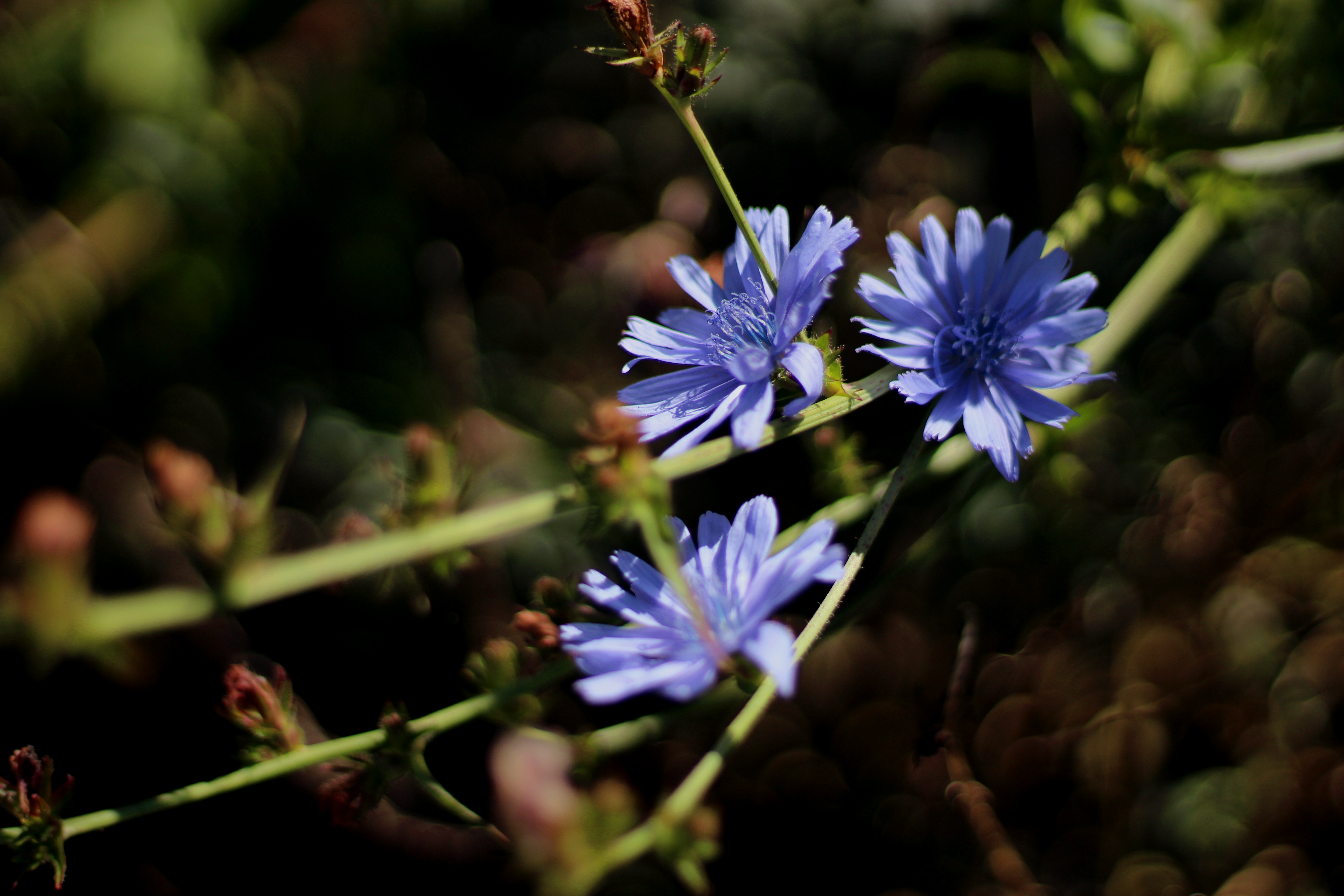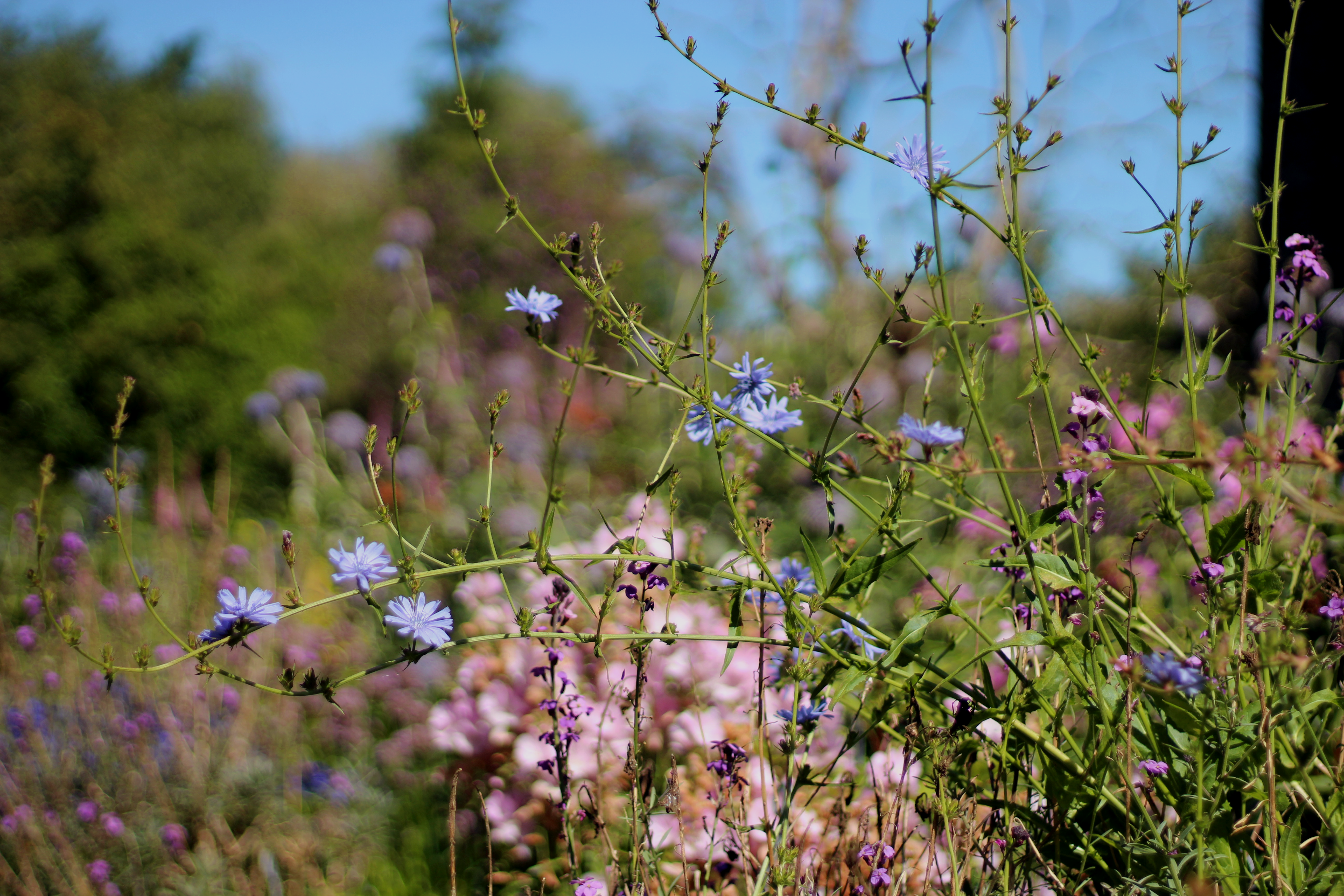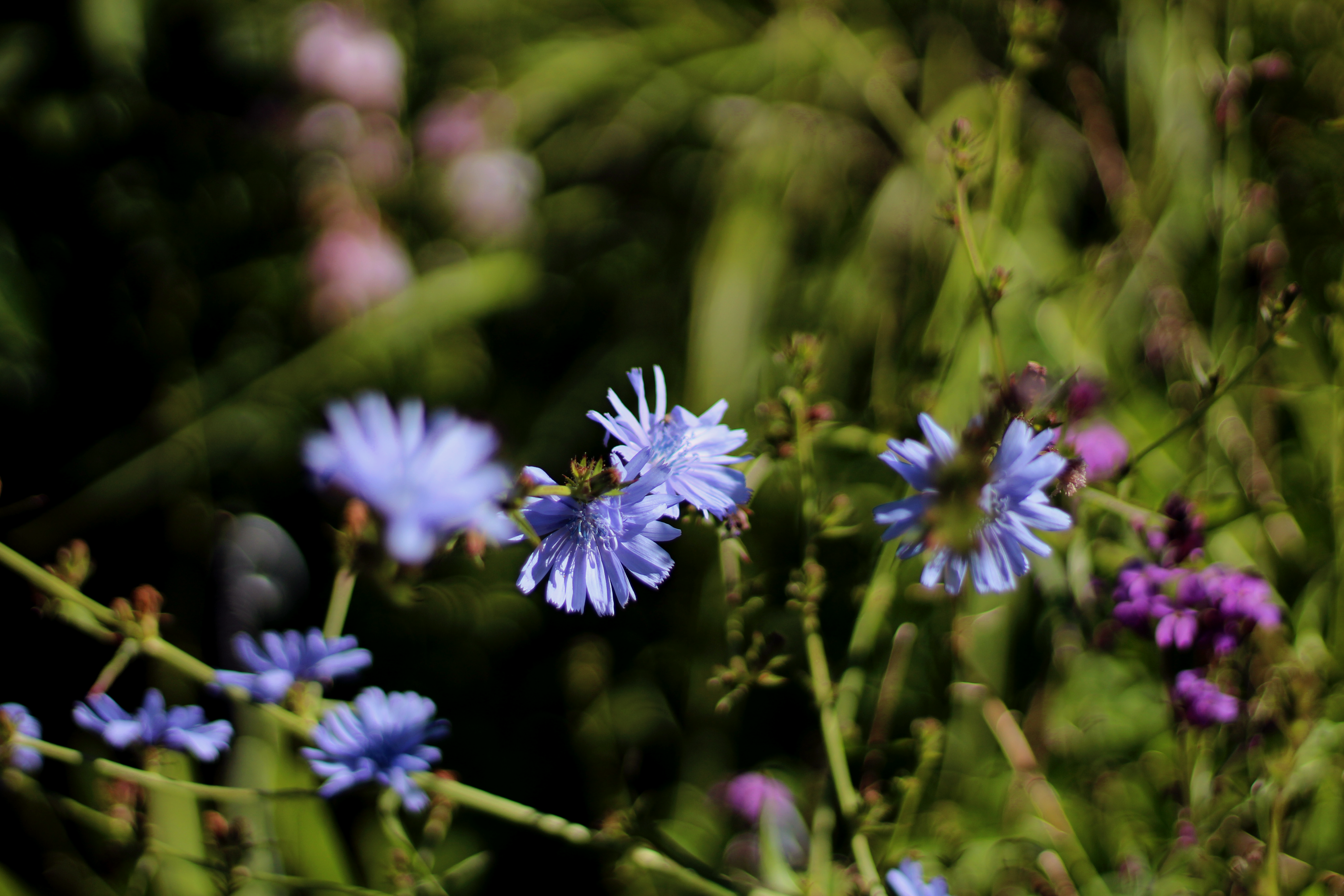Cichorium intybus
Approx. 0.5 litre pot
About this cultivar:
Cichorium intybus is one of the most prominent species within the Cichorium genus. Known as common chicory or blue sailor. The specific epithet intybus is the Latin name of chicory, from the Greek, in turn derived from the Egyptian - which meant January with them.
The flowers open and close depending on the weather, and are usually sky-blue, tho sometimes lavender, white or pink. You tend to get two flushes in spring and autumn, and people sometimes add the flowers to salads!
With its vibrant sky-blue flowers that resemble delicate daisies, this species stands out as a true beauty in any garden setting. The blooms, held atop long, slender stems, sway gracefully in the breeze, adding an ethereal touch.
- Position: Full sun, partial shade
- Soil: Almost any soil, grows well in Ballyrobert
- Flowers: May, June, July, August, September, October
- Other features: Bees and Butterflies, Cut Flowers or Dried Flowers
- Hardiness: H5 - Hardy in most places throughout the UK even in severe winters (-15 to -10°C), Fully hardy, grows well in Ballyrobert
- Habit: Clump forming, bushy
- Foliage: Deciduous
- Height: 60 - 120 cm (2 - 4 ft)
- Spread: 45 - 75 cm (1.5 - 2.5 ft)
- Time to full growth: 2 to 5 years
- Plant type: Herbaceous Perennial
- Colour: Green, blue
- Goes well with: Geranium, Leucanthemum, try with thick foliage
About this genus:
Cichorium is a genus of plants with striking blooms and remarkable versatility. Commonly known as chicory, it is a genus within the Asteraceae (daisy, sunflower) family that encompasses a diverse range of species. The genus name comes from the Latinized version of the Arabic name - it has been known to civilisation for so long, it just means 'Cichorium'!
Native to Europe, Western Asia, and North Africa, these herbaceous perennials have found their way into gardens and landscapes around the world, delighting gardeners and plant enthusiasts with their stunning presence.
But the allure of Cichorium doesn't end with its visual appeal. This genus holds a long history of human interaction, as its leaves and roots have been utilized for various purposes. The leaves, with their slightly bitter taste, are often used in culinary applications, adding a distinct flavor to salads and cooked dishes. Additionally, the roots of some species, particularly Cichorium intybus, have been roasted and ground to create a coffee substitute, providing a rich and earthy beverage enjoyed by many.
Beyond its culinary and ornamental uses, Cichorium has also been valued for its medicinal properties. Traditionally, the plant has been associated with numerous health benefits, including aiding digestion, promoting liver health, and acting as a diuretic. It has been a staple in herbal medicine for centuries, appreciated for its potential to support overall well-being.
In the garden it provides a kind of straggly ubiquitous elegance. Stick in a border where it can grow in between other plants. The foliage isn't noticable, but the flowers and stems will be.
Easily grown in most soils, they prefer full sun but will often do well in part shade.










